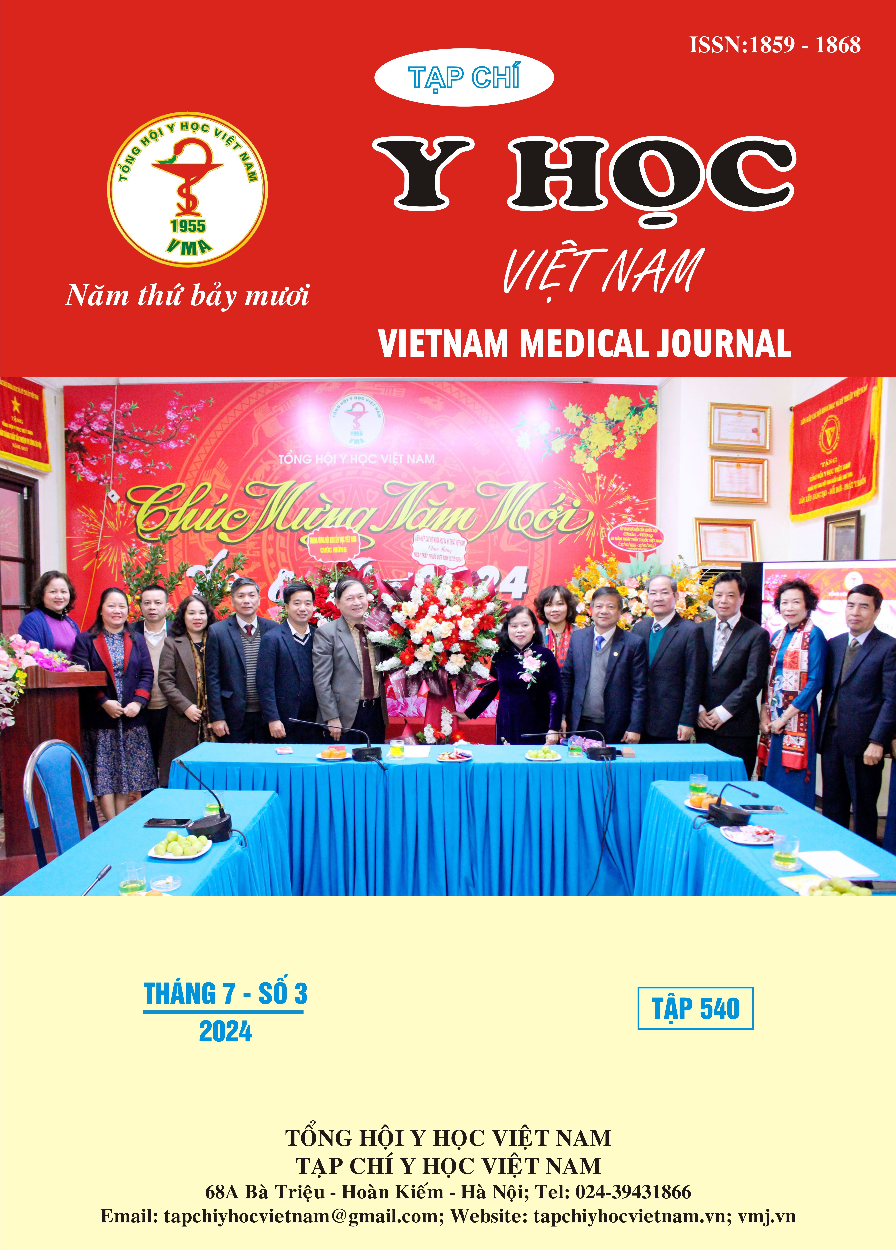PRIMARY CUTANEOUS ROSAI-DORFMAN DISEASE OF THE BACK: A RARE CASE REPORT
Main Article Content
Abstract
Rosai-Dorfman Disease is a rare, benign, and seft-limiting histiocytosis. The disease predominantly affects young adults, with a male predominance. It also predominantly affects the cervical lymph nodes, affecting only the skin very rarely, and is considered a distinctive clinicopathologic entity, easily misdiagnosed with other entities. We present a case of a 54-year-old man who had a bruised red nodular lesion on the right part of his back for about six months. The skin lesion was slowly progressing, painless, without fever. Histopathological evaluation revealed that the dermis and hypodermis consist of histiocytes containing “emperipolesis” (intact intracytoplasmic inflammatory cells). These histiocytes were expressed with CD68, S100, and Cyclin D1 but not with CD1a. The primary cutaneous Rosai-Dorfman disease was established based on the clinical and histopathological evidence obtained after excluding the disease’s involvement in the lymph nodes and other extranodal organs. After three months of post-surgery of completely removing the skin lesion, the wound exhibited good healing with no signs of disease recurrence noted.
Article Details
Keywords
Histiocytoses, Rosai-Dorfman disease, primary cutaneous Rosai-Dorfman disease.
References
2. Bruce-Brand C, Schneider JW, Schubert P. Rosai-Dorfman disease: an overview. J Clin Pathol. Nov 2020;73(11):697-705. doi:10.1136/ jclinpath-2020-206733
3. Deen IU, Chittal A, Badro N, Jones R, Haas C. Extranodal Rosai-Dorfman Disease- a Review of Diagnostic Testing and Management. J Community Hosp Intern Med Perspect. 2022;12(2):18-22. doi:10.55729/2000-9666.1032
4. Emile JF, Abla O, Fraitag S, et al. Revised classification of histiocytoses and neoplasms of the macrophage-dendritic cell lineages. Blood. Jun 2 2016;127(22):2672-81. doi:10.1182/blood-2016-01-690636
5. Brenn T, Calonje E, Granter SR, et al. Cutaneous rosai-dorfman disease is a distinct clinical entity. Am J Dermatopathol. Oct 2002;24(5): 385-91. doi:10.1097/00000372-200210000-00001
6. Sampaio R, Silva L, Catorze G, Viana I. Cutaneous Rosai-Dorfman disease: a challenging diagnosis. BMJ Case Rep. Feb 4 2021;14(2)doi: 10.1136/bcr-2020-239244
7. Gawdzik A, Ziarkiewicz-Wroblewska B, Chlebicka I, Jankowska-Konsur A, Szepietowski JC, Maj J. Cutaneous Rosai-Dorfman Disease: A Treatment Challenge. Dermatol Ther (Heidelb). Aug 2021;11(4):1443-1448. doi:10.1007/s13555-021-00557-1
8. Mizuta H, Nakano E, Yamazaki N. Primary Cutaneous Rosai-Dorfman Disease of the Scalp. Dermatol Pract Concept. Jan 2021;11(1): e2020086. doi:10.5826/dpc.1101a86


